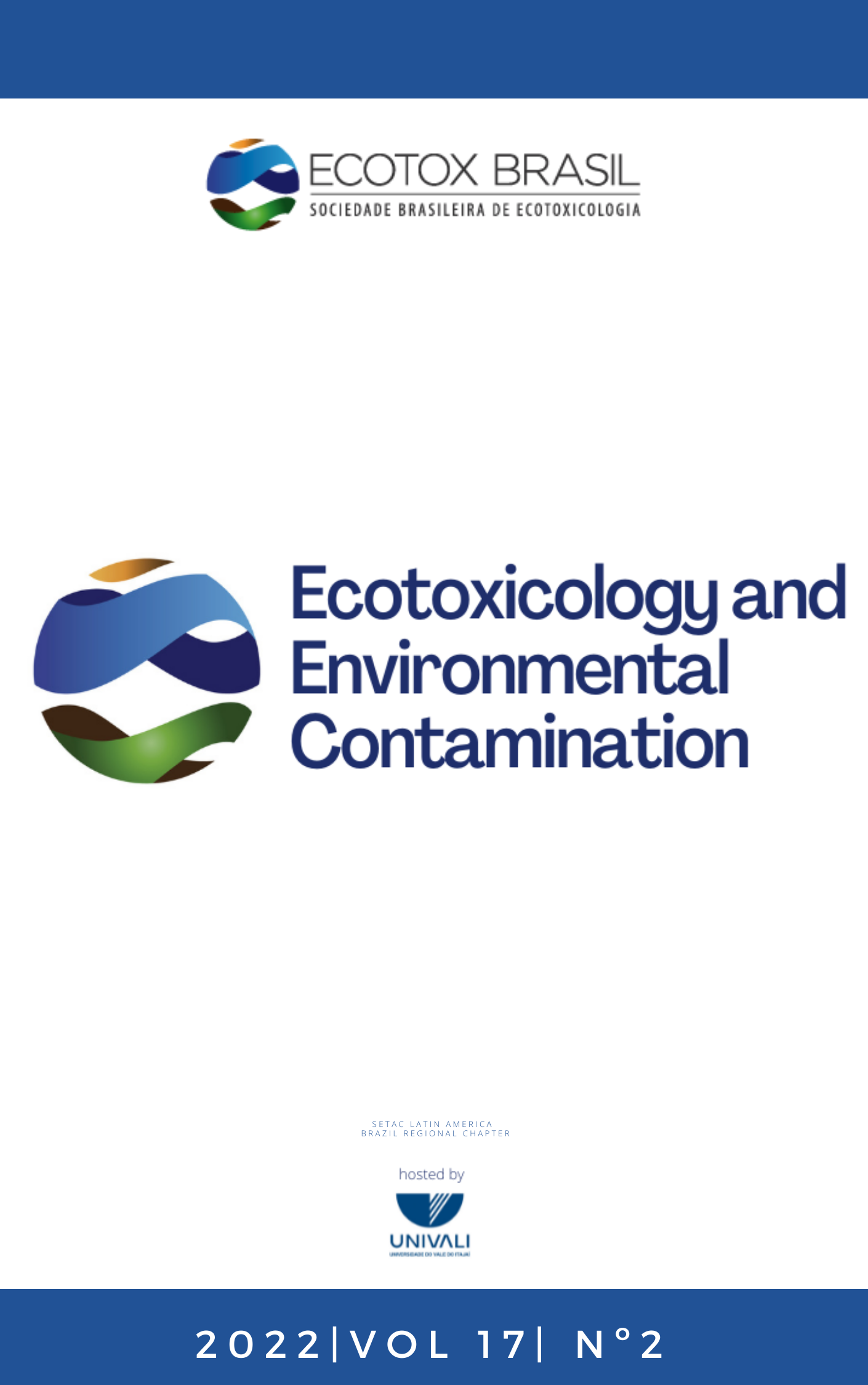How can different land use impact aquatic organisms? An evaluation of metabolic alterations during embryonic development of freshwater fish, Rhamdia quelen
DOI:
https://doi.org/10.5132/eec.2022.02.11Keywords:
agriculture, antioxidant systemn, energetic metabolism, silver catfish, early life stage, xenobioticsAbstract
Chemical compounds used in agricultural activities are constantly leaching to water bodies where they can potentially cause damage to non-target organisms. In this study, we attempt to understand how the change in land use and exposure to xenobiotic substances may alter the metabolism and neurotoxicity during the development of native fish. Embryonic development of Rhamdia quelen was used as a quality indicator of two different aquatic environments, a stream considered impacted (Tormenta) and another reference (Manoel Gomes). The eggs were exposed to water collected from the reference and impacted streams during the development period (12h, 24h, 48h, and, 72h). Changes in the activity of energy metabolism enzymes (HK, PFK, LDH, CS, MDH) and the antioxidant defense system (CAT, GPX, GR, GST) were observed in animals exposed to impacted stream water. The entry of xenobiotic compounds into rivers through the leaching of chemical molecules existent in the soil causes activation of enzymes with a detoxification function. Furthermore, inhibition of cholinesterase enzyme activity indicates contamination by anticholinesterase compounds such as organophosphates and carbamates. Sites with constant use of these compounds can trigger harmful effects to organisms in the early stages of fish development and alter the body's metabolic and defense enzymatic activities.
Downloads
Downloads
Published
How to Cite
Issue
Section
License
Copyright (c) 2022 Ecotoxicology and Environmental Contamination

This work is licensed under a Creative Commons Attribution 4.0 International License.
Copyright © 2006 ECOTOX-Brasil
Copyright notice: It is a condition for publication that manuscripts submitted to this journal have not yet been published and will not be simultaneously submitted or published elsewhere. By submitting a manuscript, the authors agree that copyright for their article is transferred to the Sociedade Brasileira de Ecotoxicologia (ECOTOX-Brasil) if and when the article is accepted for publication. The copyright covers the exclusive rights to reproduce and distribute articles, including reprints, photographic reproductions or any other reproduction of a similar nature, including translations. No part of this publication may be reproduced, stored in a retrieval system or transmitted in any form or by any means, electronic, mechanical, photocopying, recording or otherwise, without permission of the publisher.
Notice: While every effort is made by the EEC, editors and editorial board to see that no inaccurate or misleading data, opinions or statements appear in this journal, they wish to make it clear that the contents of the articles and advertisements published herein are the sole responsibility of the contributors or advertisers concerned. Accordingly, the EEC, the editorial board and editors and their respective employees, officers and agents accept no responsibility or liability whatsoever for the consequences of any inaccurate or misleading data, opinion or statement.




